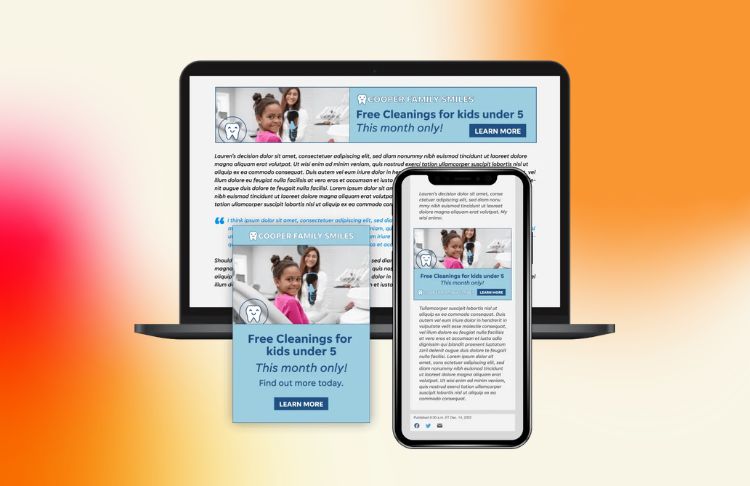Since we first learned it was coming, way back in 2020, marketers and business owners have been worrying about Apple’s iOS 14 update.
This update affects the way that businesses can collect and track data, so the implication is that you won’t be able to get a clear picture of how your advertising is performing, you could learn less about your customers, and you might have to spend more for results that are less impactful.
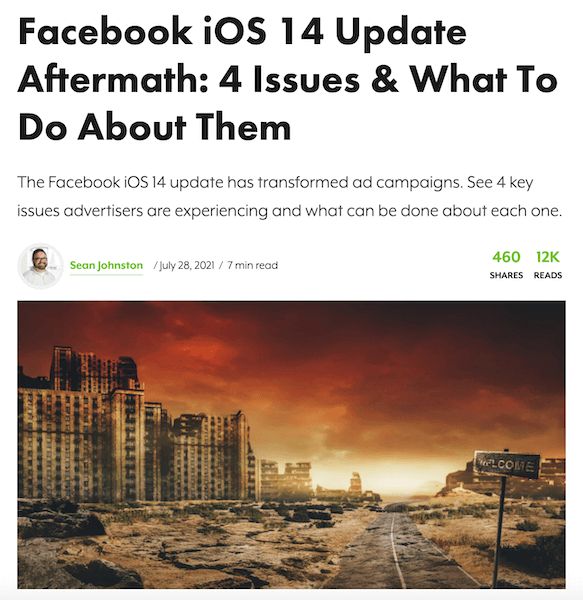
Just one example of the types of posts that were coming out about Apple’s update.
Now, these are all warranted concerns. Understanding your customers and how they engage with your ads is an integral part of online advertising. And you never want to pay more for less meaningful results.
But is it cause for panic?
We’ve collected some real-world data that puts (some) of these fears to rest, and we’ve determined a few steps you can take now to prepare your business and marketing for the full weight of these changes.
And we’re going to share it all with you here.
What is the Apple iOS 14 update?
First, let’s talk about this update in detail. What is Apple’s iOS 14 update? What does it mean? And how are experts predicting it will impact your advertising?
With the iOS 14 update, Apple is now requiring that all apps that use an Apple tracking ID show a prompt to users asking for permission to track the user outside of the app. The feature, called App Tracking Transparency (ATT), was supposed to ship with iOS 14 in the fall of 2020, but Apple delayed the release to give developers more time to update their apps as required. This change impacts users on iOS 14.5, released in April 2021, and later versions.
This means that if a user selects “Ask App Not to Track,” the app will not be able to collect certain data and share it between other apps.
![]()
This is very similar to the prompt you see on a website asking you to accept cookies. It gives users more visibility into when data is being collected as well as more control over how much information is collected about them, from where, and who it’s shared with.
You might be thinking: “This sounds like a good thing for me as a user. What’s the big deal?”
The impact to advertisers comes when you consider all the apps that will be impacted: Facebook, Twitter, Instagram, Chrome, Safari, and more. And because a vast majority of consumers are engaging with ads on these apps, it impacts the way information is shared and collected on some of your favorite advertising channels.
Will Apple iOS 14 hurt my advertising? What the data says
So, to recap:
- Apple rolled out the iOS 14.5 update in April 2021
- It impacts the way apps can collect and share user information
- This includes social media apps and mobile browsers
- Advertisers fear they won’t have access to valuable information for their campaigns
Because our goal is to help local businesses get the best results from their advertising campaigns, we wanted to fully understand how (and if) the Apple iOS 14 update was impacting social media advertising and display advertising. So we analyzed the quarter-over-quarter changes in cost per click (CPC) and cost per impression (CPM) for approximately 17,000 LOCALiQ customers running social ads and display advertising.
Apple iOS 14 update + social media advertising impact
While much has been recently written about increases in digital advertising costs related to iOS 14, we found that the results actually varied based on the type of advertiser and advertising approach that is being used. Also, importantly the impact of COVID-19 needs to be considered when you examine trends on the cost of digital advertising over the past two years.
We found that after the initial rollout of the Apple iOS 14.5 update, cost per impression (CPM) did increase slightly when compared to 2018 and 2019, but in Q1 of this year, it decreased and is actually below 2018 and 2019 levels. (With 2020 being the onset of the pandemic, the data is slightly skewed, so we chose to compare to the prior two years.)
Interestingly, our data also shows that cost per click (CPC) was actually stable in Q2 and Q3 of 2021 compared to 2018 and 2019, increased in Q4, and then settled back down to be more in line with prior periods at the beginning of this year.
“The most-impacted social media advertising campaigns were those including retargeting with landing page views because pixel tracking became limited. One reason our customers didn’t see a huge increase in CPMs despite running these types of campaigns is because our technology is able to shift budgets to better-performing audiences and tactics within social campaigns,” said Katia Hausman, Vice President of Product Management at Gannett.
Leveraging Facebook lead ads for a conversion objective is another strategy for how we were able to avoid the impact. Generating instant leads before a user leaves the Facebook platform lets us bypass the limitations of cross-platform tracking and attribution introduced by iOS 14 updates. In addition, certain advertiser types with app install objectives, which will tend to see greater impacts with the changes, are less common in our customer base.
These two figures show the impact of iOS 14 on social media advertising for our customers:

Related: Learn more about CPC and how to keep costs low.
Apple iOS 14 update + display advertising impact
Now, what about display advertising? Our data found that CPM in 2021 remained consistent with CPM in 2019. CPC saw some increase in 2021 compared to 2019 but was relatively stable from Q2 2021 through Q1 2022.
However, we found that video impressions increased in 2021 compared to previous years, which can contribute to the higher CPC as bid rates increased and there was a higher cost of video inventory as a whole.

What the data tells us about the Apple iOS 14 advertising impact
Based on our findings, we can conclude that the Apple iOS 14 update has a mixed impact. At times we don’t see as big an impact as expected, and we have some theories as to why that is:
- The update is limited to information sharing between apps, which means that apps like Meta (formerly known as Facebook) and LinkedIn aren’t losing any of the data they have on their users.
- These apps have a large user base, which means they can collect precise data that is always expanding.
- Our data shows that many of these apps have already responded to the iOS 14 update to protect advertisers from seeing a huge impact.
We’ll need to continue to monitor the data in future quarters to better understand the true impact of this change.
How to prepare for future privacy updates
While the Apple iOS 14 update doesn’t seem to be massively impacting advertising efforts, it’s important to be prepared. Especially as Google nears its cookie-less rollout in 2023—meaning Google will remove third-party tracking of users on Chrome.
Our experts compiled some actions you can take now to mitigate the impact of these updates now and in the future.
Audit targeting parameters
Ad targeting has a huge impact on the cost of your ads. The more granular and specific you get with your targeting, the more you’re going to pay for an action, such as a click.
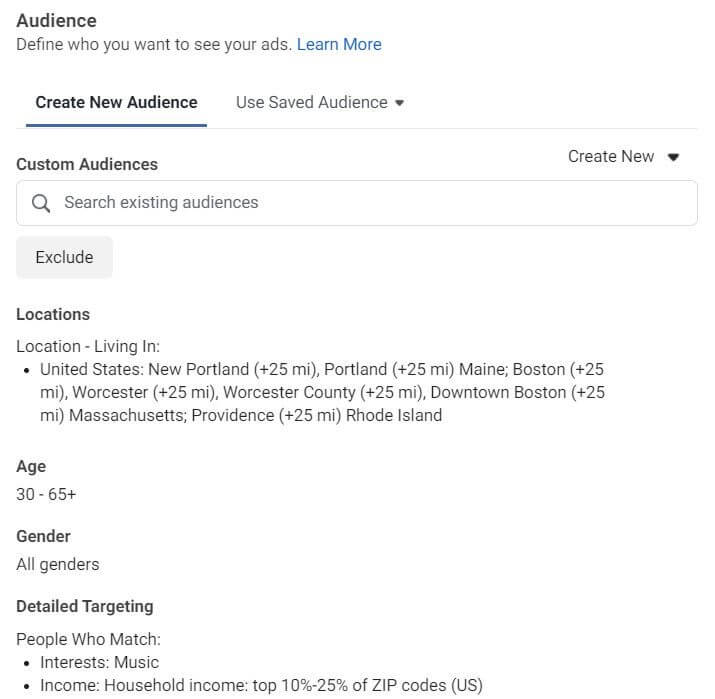
An example of creating a new audience to target for your Facebook ads.
In order to maximize the effectiveness of your online advertising while limiting the impact of the Apple iOS 14 update, you’ll want to revisit your ad targeting and widen your audience pool. This will allow your ads to be served to more users and increase your chances for finding and converting customers with your ads.
Collect first-party data
As Apple and Google take steps to control the way users are tracked and limit that information sharing with other businesses and applications, collecting first-party data, meaning data that users share with you directly, will become increasingly important.
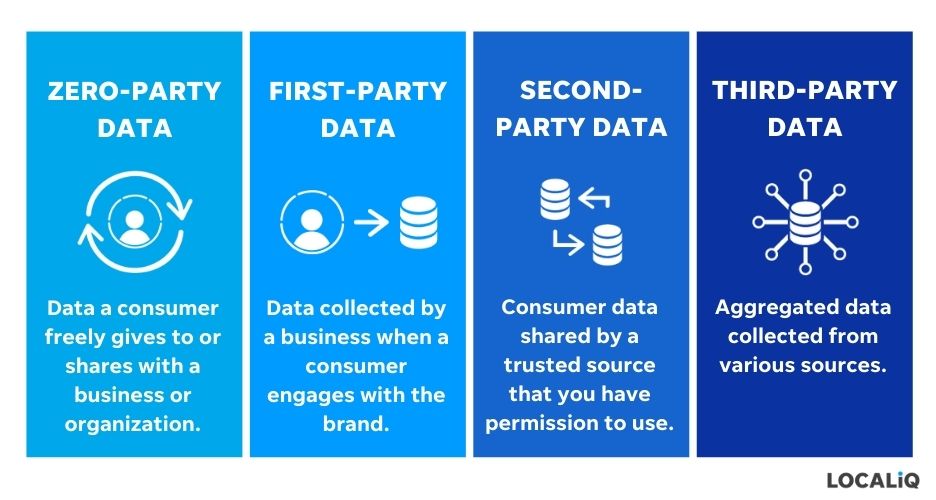
Not only will first-party data help inform and guide your ad campaigns, but it can also help with other aspects of your marketing and advertising, such as personalization, which customers have grown to expect from businesses.
Our friends at WordStream detailed how to collect first-party data here.
Have an organic + paid strategy
Online advertising is always going to be an effective way to generate leads and get in front of customers, but as advertising platforms make changes and updates, it’s important to have an “always-on” organic strategy that’s also helping you build and improve your online presence.
This organic strategy should include both SEO and social media marketing. If you have a strong SEO strategy, you can rank in search engine results pages for searches related to your business, which drives traffic to your website and increases awareness. With a strong organic social media marketing strategy, you can engage your audience and stay top of mind.
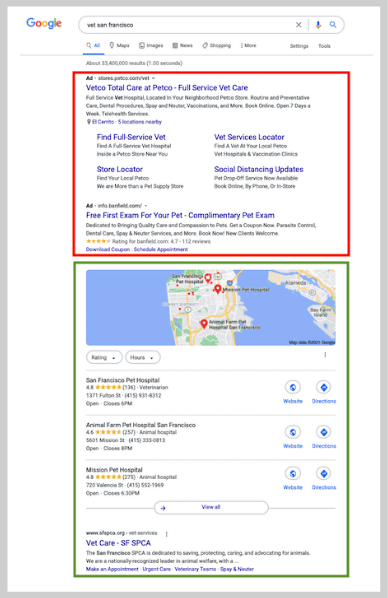
The results in green show organic search results under paid search ads.
By combining an organic strategy with paid advertising, you can increase your chances of getting seen where customers are spending time online while building valuable brand awareness.
Run ads consistently
When you hear about an impending change or update, it can be tempting to want to pause your ad campaigns until the full impact is known. However, as you run advertising campaigns, you’re able to collect valuable data that helps you optimize and refine your campaigns, such as what audiences engage most with your ads, what ads perform best, and more.
Pausing your campaigns will cause you to lose some of this data and you won’t be able to notice any impact in real-time that you could make adjustments around.
Run different types of campaigns
Within each advertising platform, you’re able to run different campaigns with different goals. By running multiple types of campaigns within each platform, you can gather even more data around what’s driving results for your business while targeting your audience at different stages of the buyer’s journey.
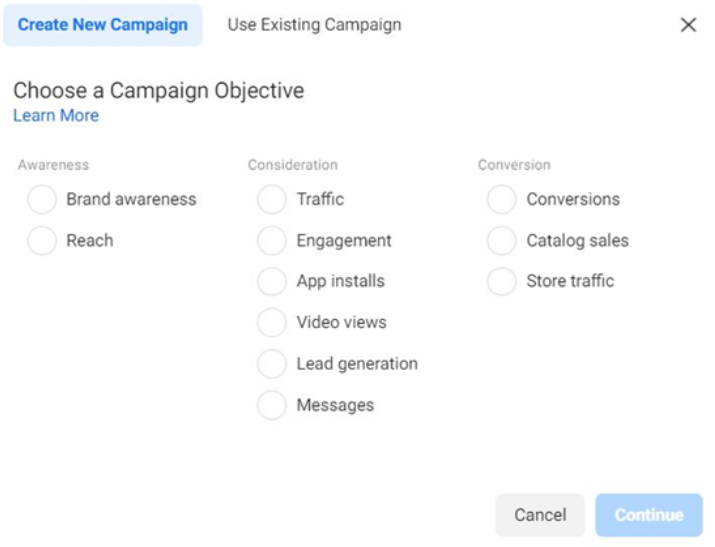
An example of some of the different campaign objectives you can run with Facebook advertising.
This can help you maximize your budget and keep costs low, especially as you’re able to refine and update your campaigns over time.
Understanding the impact of the Apple iOS 14 update
It’s always nerve-wracking to hear about another update—especially one that has been projected to severely impact advertising performance. The one thing that helps assuage those fears? Cold, hard facts! We hope that our data and insights have helped put some of those fears to rest as you navigate the Apple iOS 14 update.


